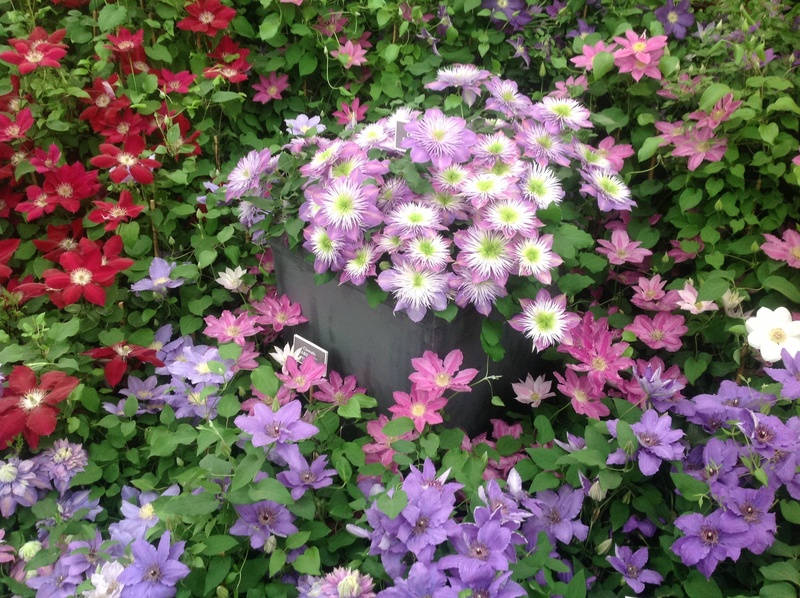Smart Planting and Design Tactics for a More Private Garden
Do you dream of a secluded retreat right outside your door? Creating a private sanctuary through smart planting and garden design is easier--and more rewarding--than you might think. Whether you have a city yard overlooked by neighbors or a rural plot bordered by open fields, strategic choices in plants and layout can transform your outdoor space into a peaceful, private haven.
Why Garden Privacy Matters
The concept of privacy in your garden goes beyond simply blocking prying eyes; it enhances your comfort and enjoyment, adds a sense of security, fosters better relaxation, and even boosts your property value. With careful planting and thoughtful design tactics, you can create secluded areas ideal for entertaining, unwinding, or meditating--no matter the size or location of your plot.

Key Principles for Designing a Private Garden
Crafting a private garden involves more than just erecting tall fences or walls. The most effective--and aesthetically pleasing--approach uses a blend of natural elements and clever landscaping techniques. Here are some essential principles:
- Layering: Use a mix of tall, medium, and low-growing privacy plants to create depth and visual barriers.
- Mixed Planting: Blend evergreens, deciduous shrubs, and flowering plants for year-round coverage and seasonal interest.
- Strategic Placement: Position screening elements where they block the most intrusive views--often along property lines or near patios.
- Multi-functional Design: Combine privacy features with other functions, like windbreaks, sound barriers, or edible gardens.
- Use of Structures: Supplement natural screening with pergolas, trellises, and living walls for additional enclosure.
Planting for Garden Privacy: Smart Choices
Choosing the right plants is central to effective and attractive garden screening. Here, we look at key options and how to use them together for maximum effect.
Evergreen Hedges
Evergreen plants are the backbone of a private garden--they provide year-round privacy and block unsightly views. Some classic choices include:
- Boxwood (Buxus): Dense, easily shaped, and low-maintenance, ideal for formal hedges.
- Yew (Taxus): Long-lived with dark green foliage; tolerates heavy pruning for crisp lines or rounded forms.
- Privet (Ligustrum): Fast-growing and tolerant of various conditions; produces white flowers in summer.
- Leyland Cypress: Grows rapidly, offering a tall, dense barrier in a few seasons.
- Laurel (Prunus laurocerasus): Broad, glossy leaves and fast growth make it a popular screen.
Deciduous Shrubs
While they drop leaves in winter, deciduous shrubs offer dense foliage during the months when you're outside most. Mix them with evergreens for seasonal variety and thicker coverage, for example:
- Viburnum: Provides masses of spring blooms and privacy during the growing season.
- Dogwood (Cornus): Vibrant stems add winter color when leaves are gone.
- Forsythia: Welcomes spring with brilliant yellow flowers and fast-growing green hedge thereafter.
Bamboo: Fast, Stylish, and Effective
Bamboo is unmatched for rapid vertical growth, forming a lush, green living privacy screen in minimal time. Opt for clumping varieties to avoid aggressive spreading, such as Fargesia or Bambusa.
Ornamental Grasses
Tall grasses like Miscanthus or Feather Reed Grass offer movement, texture, and partial screening, particularly useful in modern garden designs. They sway gracefully in breezes and often retain interest through winter.
Climbers and Vines
Vertical gardening using vines is an excellent way to add height and seclusion, especially when space is tight. Consider:
- Clematis: Profuse flowering adds color and coverage to fences or trellises.
- Honeysuckle: Fragrant and attractive, supports pollinators as well as privacy needs.
- Evergreen Jasmine (Trachelospermum jasminoides): Rounded leaves and perfumed summer blooms on a sturdy, evergreen vine.
- Ivy (Hedera helix): Fast to establish, hardy, and effective on walls or pergolas, but requires monitoring to prevent damage to structures.
Garden Design Tactics for Enhanced Privacy
Even the best plant selection can only do so much if not combined with wise garden design strategies. Below are top tactics to boost seclusion.
Layered Planting for Depth and Density
Mimic the natural edge of woodlands by layering trees, shrubs, and perennials. This not only improves privacy but also supports wildlife and creates a more visually dynamic landscape.
- Tallest plants or trees at the back, such as hornbeam or cherry laurel.
- Medium shrubs in the middle--think viburnum or hydrangea.
- Low-growing perennials at the front, including hostas, ferns, and heuchera.
Screens, Trellises, and Living Walls
Add instant privacy with trellises and pergolas, or use modern living wall systems. Climbing plants trained up these supports fill in gaps efficiently and beautifully. Wooden screens with staggered slats block views while permitting airflow and dappled light.
Strategic Raised Beds and Berms
Elevate the soil with raised beds or berms (mounded earth) to increase the height of your screening. This is particularly useful if your property sits lower than neighboring land, offering a subtle boost and better drainage for plants.
Enclosed Zones and Hidden Spaces
Designing your garden privacy layout around enclosed seating nooks or sunken patios can create intimate areas shielded from view--sometimes even without full boundary screening. Use planting, half-walls, or latticework to define these cozy corners.
Paths and Planting to Direct Views
Use winding paths flanked with strategic planting to further guide visitors' sightlines away from your home or seating areas. Position patios and social spaces where they are naturally protected by existing plants or slopes.
Smart Planting: Year-Round and Low-Maintenance Privacy
The best garden privacy planting schemes provide coverage in all seasons and suit the time you have available for maintenance. Here's how to create a resilient, attractive, and low-effort screen:
- Include evergreens for winter shelter and consistency.
- Combine deciduous and flowering plants for varied interest and density in summer.
- Opt for native species whenever possible--they're less prone to pests and require less care.
- Mulch around plant bases to conserve water and suppress weeds.
- Use drip irrigation or soaker hoses to simplify watering, especially for long screening rows.
Non-Plant Solutions to Support Privacy
While smart planting is the heart of a natural privacy barrier, non-living elements can also play an invaluable role--especially in the early years while your plants mature.
Fencing and Green Screens
A well-chosen fence--either solid or with gaps for planting--can deliver immediate seclusion. Covered in climbers, it becomes softer and more natural over time. Try mixing lattice panels with lush vines for a balance of enclosure and light.
Sculpture, Water Features, and Garden Art
Objects like large pots, garden statues, or water features can create focal points, distract the eye, and set the mood, drawing attention away from less private boundaries.
Garden Sheds and Summerhouses
A strategically placed shed, summerhouse, or greenhouse can form a solid backdrop for planting and instantly block intrusive sightlines. Surround with layered planting to ensure the area looks welcoming rather than defensive.
Top Tips for Successful Private Garden Planting
- Plan Before You Plant: Map out where privacy is needed most, considering sun patterns and neighbor windows.
- Think Long Term: Give your chosen plants space to grow and mature--cramped planting can cause later problems.
- Mix Textures and Heights: A range of leaf sizes, shapes, and growth habits creates a far more attractive barrier.
- Stagger Planting: Avoid straight lines for a more natural look and thicker coverage.
- Maintain Access: Ensure privacy planting doesn't block paths or views you want to keep, such as toward a scenic vista or kids' play area.
- Stay Consistent with Your Garden Style: Let your screening blend with the overall theme, whether modern, cottage, or woodland-inspired.
Smart Planting for Privacy: Mistakes to Avoid
- Over-Planting: Too many plants can compete for resources, grow poorly, and require eventual removals. Plan for mature sizes.
- Ignoring Growth Rates: Mixing slow and fast growers can result in uneven hedges or patchy screens.
- Poor Plant Selection: Exotic species may struggle in your climate, while aggressive spreaders (like running bamboo) need careful containment.
- Neglecting Local Regulations: Some areas have height restrictions for garden walls or hedges. Check local rules before planting.
Benefits of a Smart, Private Garden
- Enhanced comfort for relaxing and entertaining.
- Reduction of noise and wind intrusion via dense planting.
- Wildlife support, offering food and habitat for pollinators and birds.
- Visual interest in all seasons if you combine foliage, flower, and structural plants.
- Increased property value by improving curb appeal and outdoor living space usability.

Frequently Asked Questions About Smart Garden Privacy
What is the fastest way to create garden privacy?
Using fast-growing evergreens like Leyland Cypress, clumping bamboo, or mature shrubs combined with panels or trellises offers near-instant results. Choose options that suit your climate and soil.
How do I maintain my privacy plants?
Water new screens deeply until established, mulch annually, and trim to encourage dense growth. Use slow-release fertilizers if needed and monitor for pests or disease.
Can I combine edible plants with privacy borders?
Absolutely! Espaliered fruit trees (apples, pears), berry bushes, and herbs can all provide tasty yields while contributing to your garden's seclusion and biodiversity.
What about privacy in a small garden?
Climbing plants, living walls, and tall containers are perfect for small spaces. Focus on vertical gardening and use multi-functional furniture or screens to optimize every inch.
Conclusion: Start Designing Your Private Sanctuary Today
A more private garden is within reach, no matter the style of your landscape or size of your budget. Using smart planting and design tactics for privacy--from evergreen hedges to layered layouts--transforms your outdoor space into a place of retreat, beauty, and security. Take the time to plan, plant thoughtfully, and enjoy the transformation of your garden into your own secluded haven.
Interested in revamping your garden privacy? Start by evaluating your site's sightlines and sun patterns, then experiment with the mixture of the strategies above for a bespoke, beautiful, and private oasis you'll cherish for years to come.



